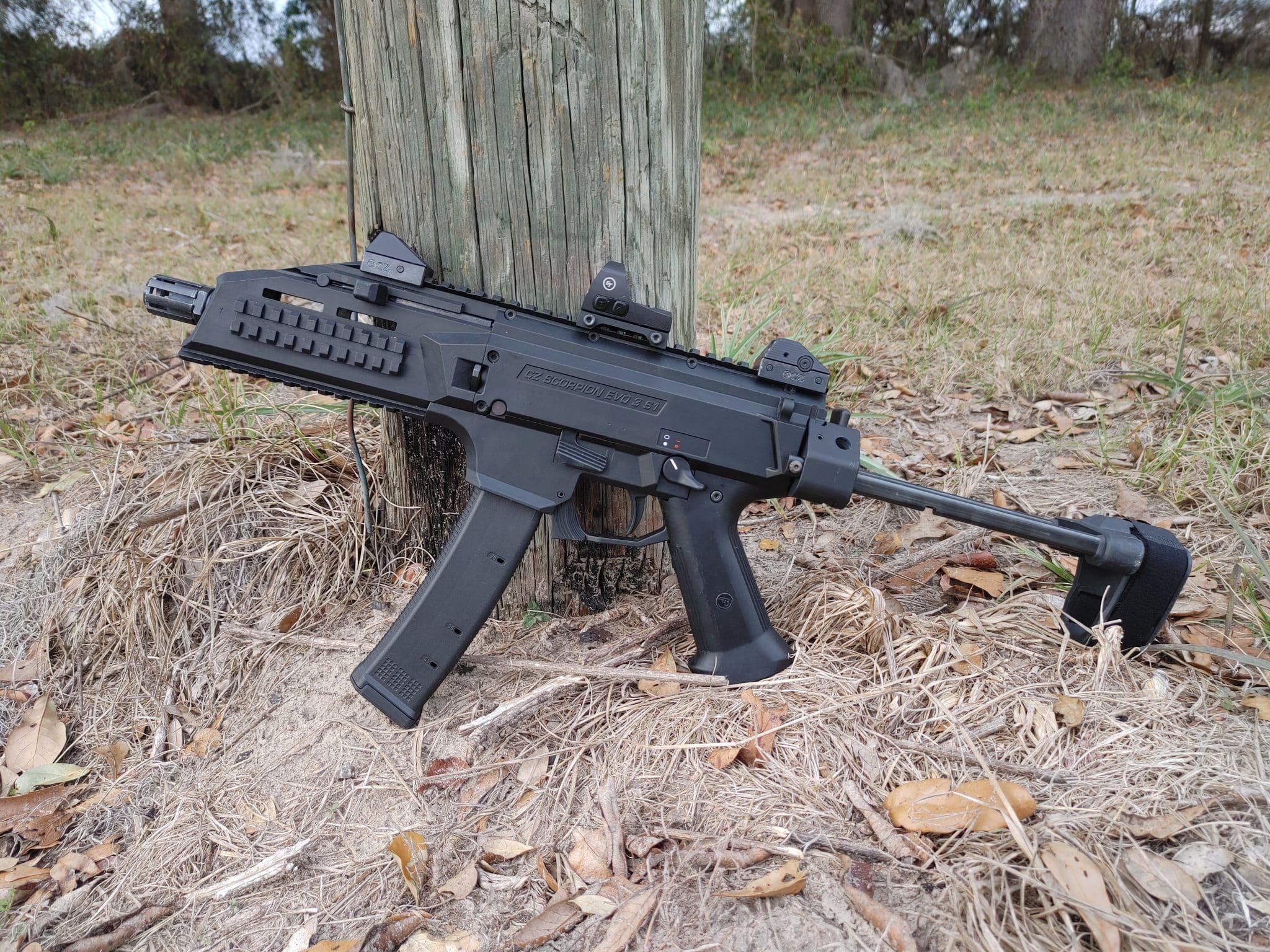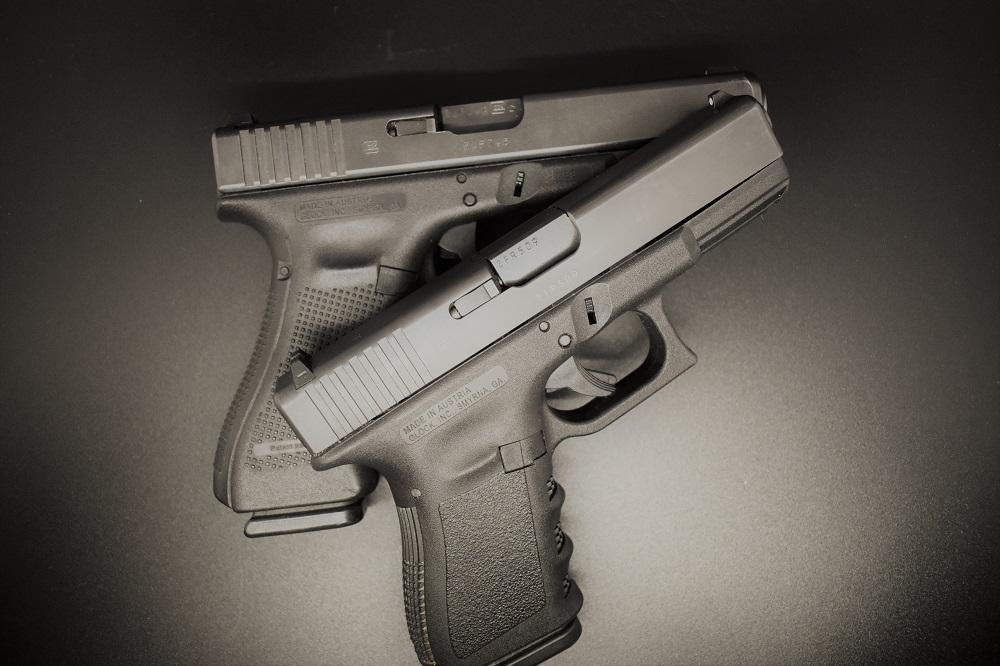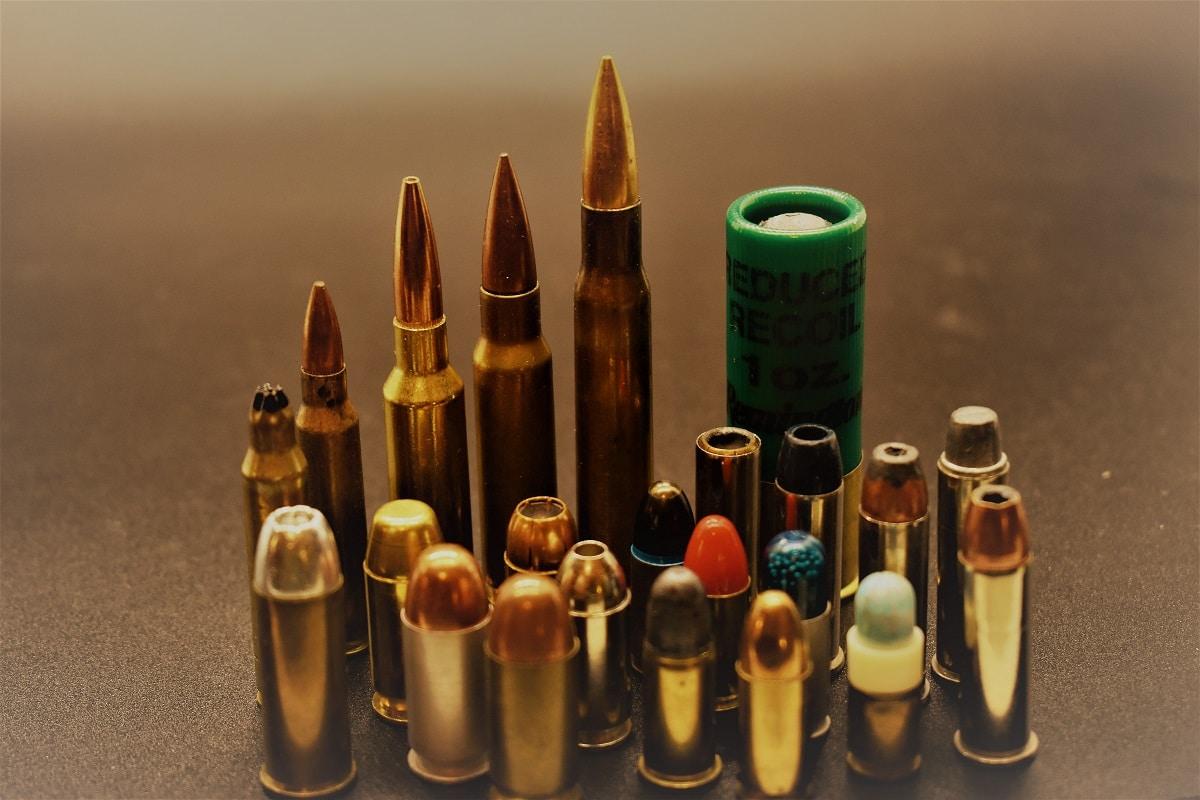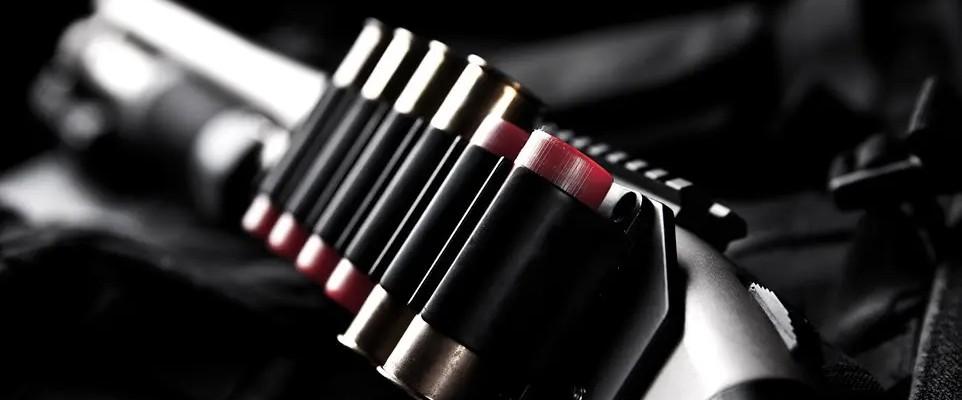The 5 Shotgun Types
Written By
Michael Crites
Licensed Concealed Carry Holder
Reviewed by
Editorial Team
Learn About The Editorial Team
Share:
Products are selected by our editors. We may earn a commission on purchases from a link. How we select gear.

Updated
Jan 2023
Since their introduction in the 16th century, shotguns have been built in a huge variety of designs, evolving from early muzzleloading configurations to embrace the introduction of percussion ignition in the 19th century, adding a hinged breech in the 1830s, and eventually, with the advent of modern self-contained cartridges that includes primer, propellant, and projectile — maturing into the modern shotguns we all know and love.
These days you’re less likely to encounter a percussion cap, but you’ll almost certainly come across single-shots, double-barrels (either in a side-by-side or over/under configuration), and multi-barreled guns that use slides, levers, or semi-automatic system to operate the action.
Boiling the above down to what’s likely on the shelf at your LGS, you’ll generally have five options to choose from: single-shot, doubles (side-by-sides and over/unders), pump action, and semi-auto shotguns.
As with any firearm, each type has its strengths and primary application in the shooting world. Just as you wouldn’t want to tackle long-range target shooting with your carry pistol, you’ll need to select your shotgun in accordance with your goals.
Let’s dive in.
In This Article
A Word on Actions
You can’t discuss firearms — in particular shotguns — without using the term “action.” The action contains all the internal components that make the firing sequence possible (chambering a round, firing, extracting a spent hull, etc.) “Action” is also used to categorize firearms that use the same type. I’ll be using the shared action to group the five types of shotguns outlined in this article.
Break-Action Single-Barrel
One of the most reliable firearm systems ever created, single-barrel break-action shotguns are often inexpensive, utilitarian “barn guns” that are as durable as they are simple. Classically thought of as leaning in the corner of a barn awaiting a coyote or predator curious enough to FAFO, singles are light, kick like the dickens, and — as you may have surmised — limit your capacity to a single shot.

The primary benefits of a single shot are simplicity and reliability. Little more is needed than point, cock, shoot.
Controls are often just a barrel unlocking lever, hammer, and trigger — and often not even a safety is present, which means care must be used when lowering the hammer on a loaded single. This can lead to heated debate about the fit of singles for inexperienced shooters.
While simple to operate, affordable, and available in any gauge, barrel length, and choke option under the sun, few would select a single barrel as their primary choice. The capacity limit coupled with the external hammer means you can often get more of what you want with another type of shotgun, with the possible exception of trap shooters.
Trapshooting is a competitive sport of clay pigeon shooting, using a shotgun to break clay targets launched from a “house” away from the shooter. The game originated as a way for bird hunters to keep their skills sharp, initially using live birds before evolving to use today’s clay pigeons.

The competition around trapshooting meant prize money for those who could take home the win, which led to serious trap shooters investing in specialized guns to help them secure the “W” and associated winnings.
This created the market for high-end single-barrel trap guns, often handcrafted and refined well beyond functional requirements from every major global brand, from Italy to England and the United States. The Ithaca is a shining example here in the States.
Break-Action Doubles (SxS & U/O)
If you take the break-action single-barrel design and slap on a second barrel, you get one of the most proven and classic shotgun designs ever created; the double.
The term “double barrel shotgun” often conjures images of side-by-side coach guns used in Wild West exploits, and while it’s appropriate to refer to side-by-side designs (SxS) as double barrel, the Over/Under (O/U) — which stacks barrels vertically — is the more popular of the two.
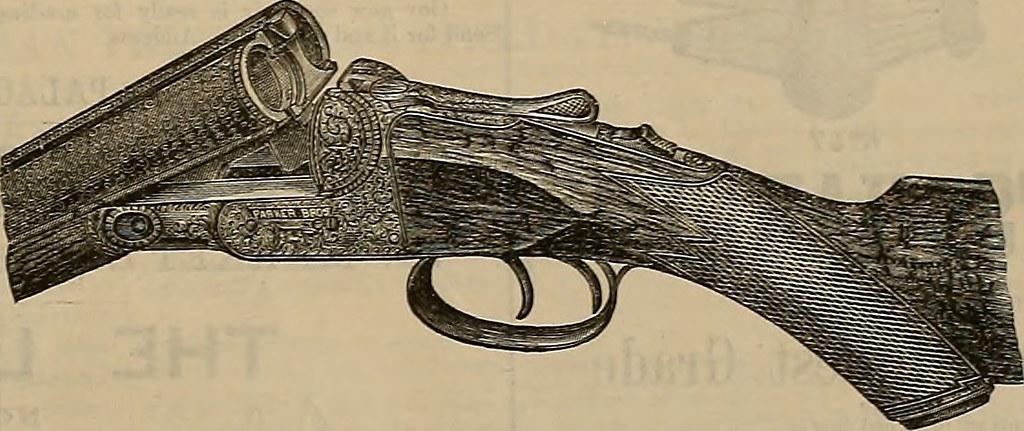
The side-by-side shotgun is the linear grandchild of the flintlock, with ancestry that stretches back through centuries of conflict and hunting. This lineage means the SxS was improved and refined many times over before JMB changed the scattergun world with his pump-action Model 1893. That long history meant the SxS was also the most popular type of shotgun for many, many years.
In fact, the break-action SxS was so good for so long, it can be argued that the later action types were really designed to improve on it from a performance perspective, but rather to add capacity and enable mass production. The craft of the bespoke side-by-side shotgun had to run headlong into the industrial age at some point, and it did — as it takes a long time (and these days upwards of $20,000) to craft an exquisite, lightweight, balanced, flawless SxS.
There’s a market for them, but it’s rather limited these days.
Why choose a double? For one, balance. They are incredibly well-balanced firearms and combine ideal weight with the desired gauge and a choice of choke between the two barrels, with each barrel firing independently with either a specific trigger or sequential trigger pull.
Another advantage (albeit a landscape of debate) is one of slight differentiation between the relative advantages of the SxS and O/U — with the SxS offering an advantage in uncontrolled environments — such as in reacting to birds or game flushed from cover. An O/U has the advantage with predictable distances — such as when shooting trap or skeet.
That said, an advantage is only an advantage if it works for you, so try your hand and determine what truly works for your taste and style.
Another reason to consider a break-action? Safety. They cannot fire when broken, which means walking in a group where everyone has a broken shotgun over their shoulder means everyone can see that everyone’s firearm is indeed safe.
This is helpful in part because operating a break-action is nearly silent. You can open, load, close, and point a SxS without ever alerting a target — which is great for hunting jumpy birds but can complicate group scenarios.
Sidelock and Boxlock Doubles
The world of the modern side-by-side shotgun diverges at the locking mechanism — with the two variants — the Sidelock and the Boxlock — occupying two different sides of the proverbial tracks.
For the monocle/top hat set, the Sidelock is the preferred SxS, as it is both more expensive and has historical pedigree on its side (it’s also closely associated with some of the biggest names in British guns like Holland & Holland, Purdey, Boss, and Woodward — all of which are have historically been located in London.)
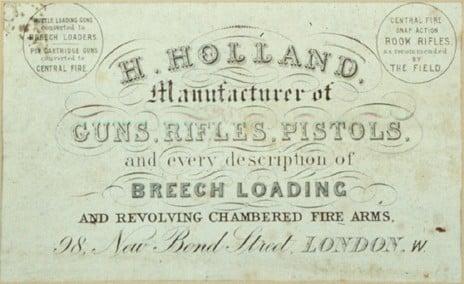
Sidelocks are also considered superior to Boxlocks (yet another topic for several hundred years of online debate…) as their 50+ main parts mean they’re incredibly complicated little systems and exquisitely expensive to build, using a number of the same terms as clock makers like Tumbler, Sear and Bridle.
They also set the locks further back than Boxlocks, which allows for more steel across the action for additional strength, and their geometry gives the user a crisper trigger pull.
While simpler and crafted with fewer parts, producing a Boxlock that’s on par with a Sidelock requires a fair degree more effort (and, in turn, cost) than the Sidelock, and with the pedigree associated with Sidelocks, it’s tough to ask the same price for an equivalent Boxlock, which basically means big money buyers are really only interested in Sidelocks.
The Over/Under
While the side-by-side became dominant mainly because, in the days of hammer guns, it was simply easier to orient the hammer mechanism for side-by-side barrels than for barrels on top of one another.
Once hammerless guns started to become the norm in the last 1800s, over/under shotguns took off partly because of the single sighting plane. Stacking the barrels means you only see one barrel — which makes for easier shot placement.
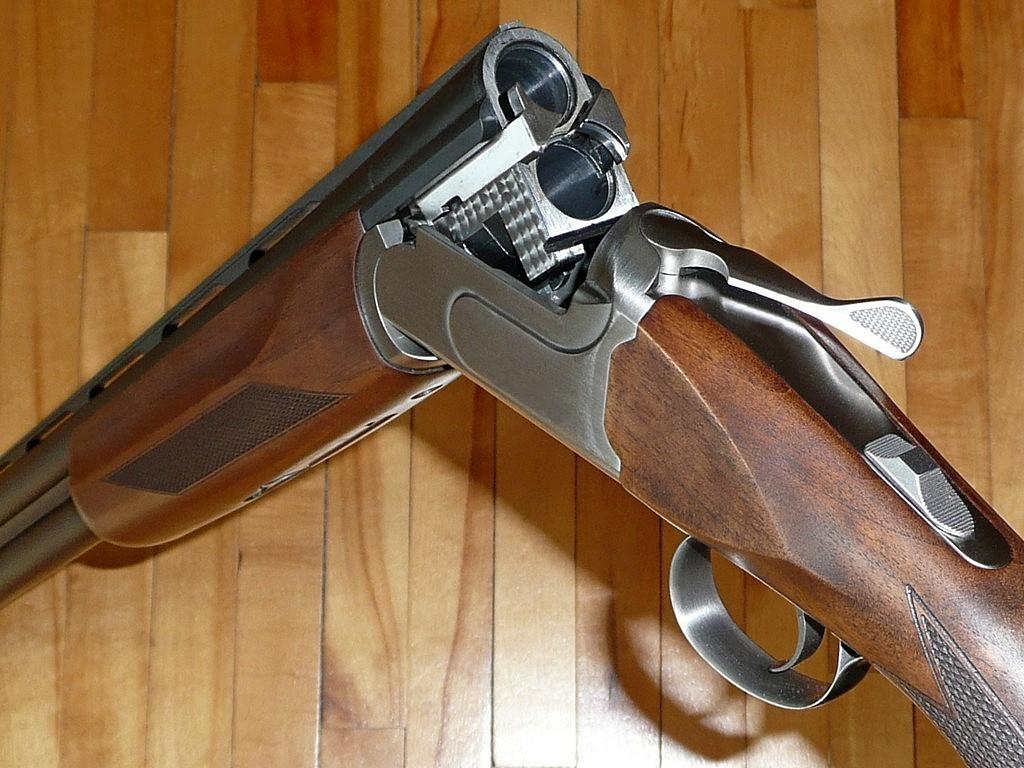
Letting historical sleeping dogs lie, the over/under has become the face of the modern double shotgun, with you will find on every trap, skeet, and sporting clay meet in the world.
Some exquisite examples of the O/U are available, with bespoke made-to-measure arms running you more than a modern supercar, or off-the-shelf options, Beretta’s new Ultraleggero, available for a little under $3,000, so for the aspiring O/U fan, there’s something for (nearly) everyone.

Practically speaking, the U/O has an advantage of a fair degree of modularity — accepting differing barrel lengths, chokes, configurations, and gauges — which means, while not inexpensive, a quality Over/Under will give anyone access to an unparalleled variety of shooting disciplines.
Pump/Slide Actions
Few firearm operating systems are as proven as the venerable slide (or pump) action — nor are there many firearms that feel as distinctly American. In 1899 the John Browning-developed Winchester 1897 pump-action shotgun became the first modern combat shotgun used but the U.S. military. His system (like so many others) has been made in one form or another by every major firearm manufacturer over the years.

These guns are portable, reliable, and durable enough to find a home in any situation that calls for a shotgun — be it shooting trap, bringing in waterfowl, putting down the occasional predator around the farm, clearing trenches in wartime, or LEO use to keep the peace.
In short, if the situation calls for a shotgun, chances are there’s a pump action that will meet the need.
The pump action uses a tubular magazine that loads cartridges into a single barrel when the slide is operated back and forth with the forward hand. This “pump” action opens the bolt, ejects the empty shell hull, chambers a round, and closes the bolt all in one quick motion.
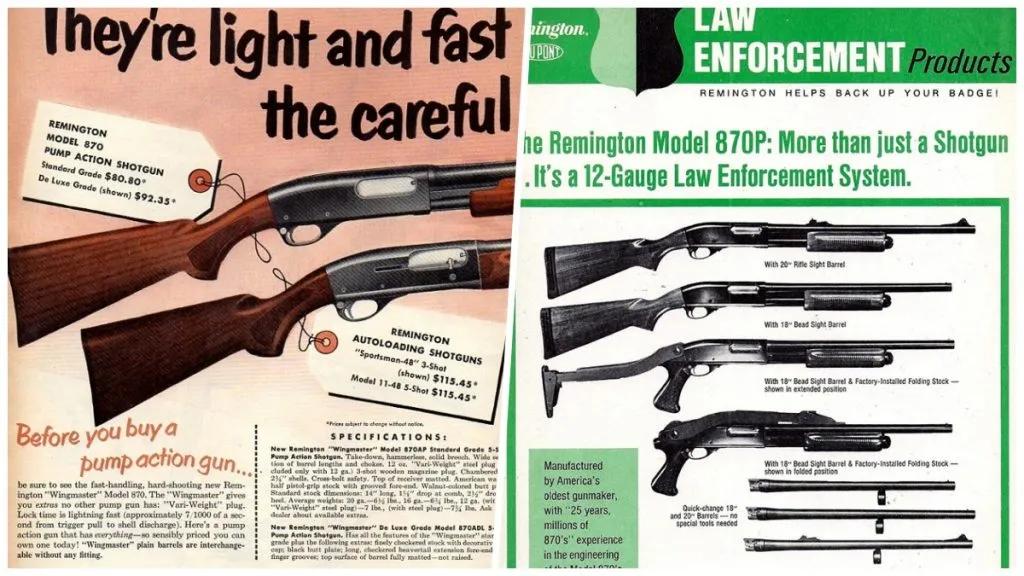
You’ll find pump action shotguns produced in any country with a firearms production industry. Still, the design and most popular models are very American — specifically, I’m referring to the Remington 870 and Mossberg 500 (with the Ithica 37 getting the nod for the longest continual production.)
The Remington 870 is so popular that it holds the mantle of the most produced firearm in history, with north of 10 million having been made since its introduction in 1949.
The beauty of the pump action is how naturally the action can be performed. The lead hand rests on the fore-end and activates the slide when the user contracts their forward hand toward the action — then reverses the order of operations, extends the slide, and chambers a new shell. This has the effect of bringing the muzzle in line for the next shot. This action is swift and positively impacts accuracy — as some shooters are more accurate and faster with reloads when using a pump gun vs. a semi-auto shotgun.
Pump guns also have the benefit of being incredibly reliable — and given the ubiquity of the pump platform, any wear components or likely breakage is going to be well known — and probably plenty cheap to replace.
Given the sheer number of quality used pump guns on the market today, a well-loved pump action shotgun is likely the best deal in the world of firearms — and one that few would give you guff about.
Semi-Autos
A semi-automatic shotgun — much like a semi-automatic rifle — uses an action that functions autonomously from the user. They chamber a round, eject an empty hull, and chamber a fresh round without any contribution from the shooter — except for pulling the trigger.
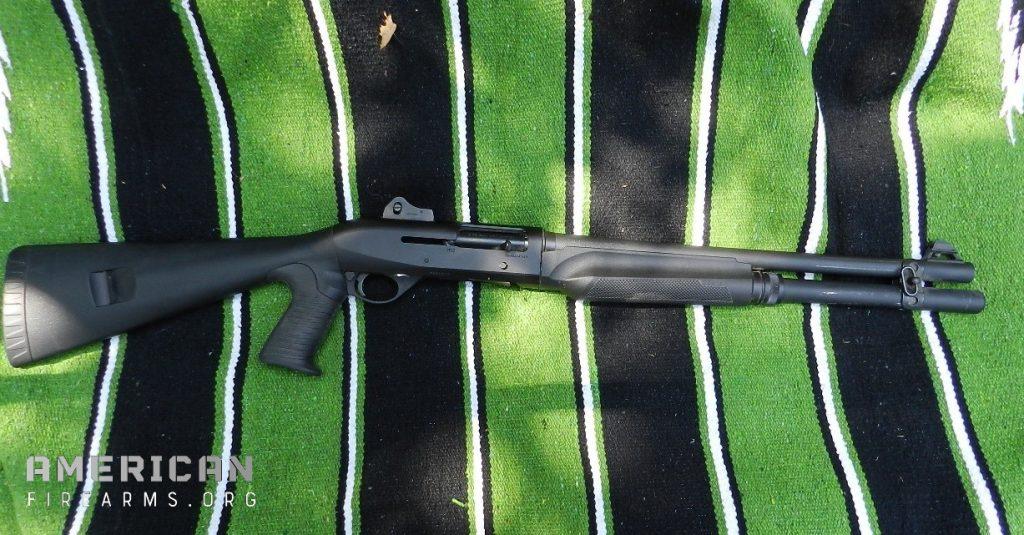
The action is driven by one of two forces — either recoil (the earlier design) or gases – -often called “gas guns” — which function a bit like the AR platform by using gas from the fired shell to drive a piston into the breechblock and cycle the action.
Originally brought to market with JMB’s Browning Auto-5 — the first mass-produced semi-automatic shotgun– and introduced right around 1900, semi-auto designs pre-1963 were challenging for users. The Auto-5 used a long-recoil design that required the barrel to be driven rearward to cycle the action. That produced a very different shooting experience from the SxS and pump guns of the day. Many of the recoil-driven designs were selective about loads, requiring a specific balance of loads and shot charges to successfully drive the action (and avoid loading issues). With that limited selection of shell options and considerable mass sliding around, recoil-driven guns tend to produce more felt recoil than gas guns.
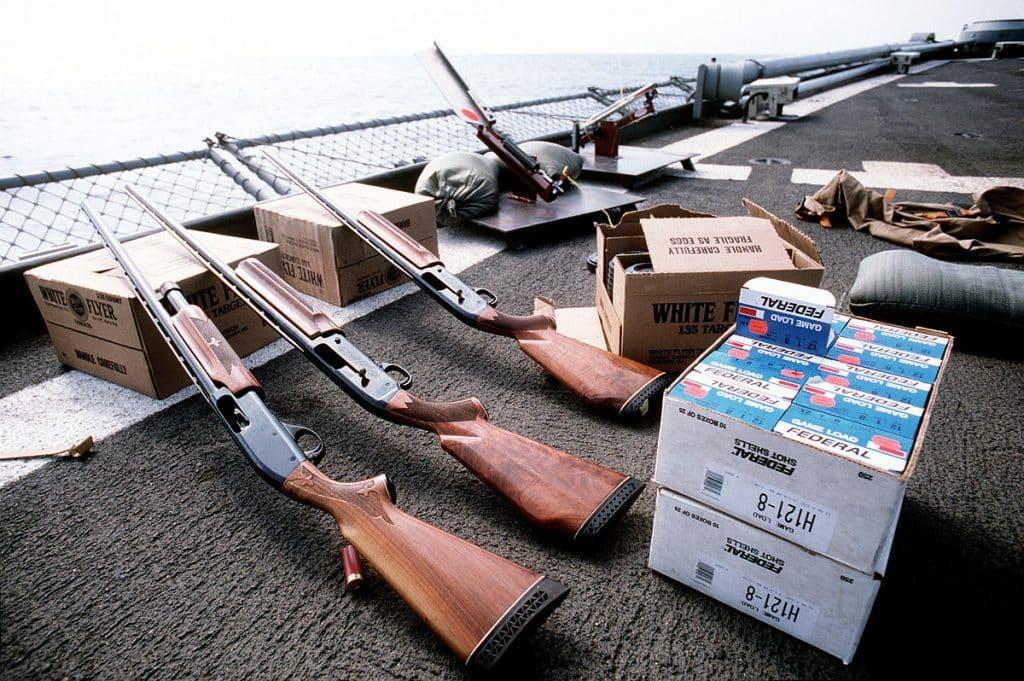
The introduction of the Remington 1100 really started the ball rolling with semi-auto adoption. Its carefully balanced action helped avoid much of the previous load sensitivity with other semi-autos, and the design’s smart use of recoil energy lightened recoil, helping the Rem 1100 become the best-selling semi-auto shotgun of all time.
With a gas gun, rather than driving the action with the recoil energy of the fired shell, these divert pressure and gas from the fired cartridge to drive a multi-stage system combining a piston and operating rods. This combination of gas routing and componentry helps to soak up felt recoil, making gas guns incredibly approachable for new shooters.
While this design, by its nature, introduces fouling into the action, modern semi-autos are incredibly reliable, albeit with slightly more (at least perceived) maintenance requirements than other types of actions.
That said, standard maintenance will likely keep your semi-auto running without complaint.
A third action (and one that’s all the rage as of late) is the inertia system, which uses a two-piece bolt to drive the action. These use barrel pressure and recoil energy to compress a spring and shuttle the action through the extraction and reload process.
These avoid the fouling of gas guns and offer a reliable shooting experience (albeit with a slightly more narrow selection of shells.)
The main downside with semi-autos relative to other shotguns is safety. A semi-auto will immediately load another shell, creating a situation new shooters must learn to handle. Break-actions and pumps are simple enough to render safe without any additional steps — break open a SxS or pull the slide back on your pump, and both are made safe.
A semi-auto requires one to know to lock the breechblock — while not complicated — this is indeed another step.
Semi-autos are also less than welcome in some game bird hunts — again because it’s impossible to determine if the gun is safe at a distance, and trap clubs can frown on them because they fling hulls to the right, which can be rather irritating to anyone else on the line.
No Lever or Bolt Shottys?
Are there level and bolt action shotguns available? Yes. Are they common? No.
The principal reason for the absence of lever and bolt-action shotguns on our guide is those systems, while entirely viable for centerfire rifles, were long ago eclipsed in reliability and popularity by pump and semi-autos. Some European manufacturers paired shotguns with rifle barrels to create multi-purpose arms, but those are relegated to the obscure corners of the firearms world these days.
There’s also the infamous Street Sweeper, which pairs a drum magazine with a 12-inch barrel. They are not practical or particularly effective, but they certainly look the part (and make great video game and Hollywood fodder.)
In Closing
Step onto any sporting range these days and you’re likely to spot any one of the above shotguns (and plenty of people who will let you know why their choice is the best of the bunch.)
The semi-auto has taken the top spot for many users, with its softer shot and easy-of-use — plus many of the late model semis from Beretta, Benelli, and Mossberg have to be shot to be believed.
That said, the Over/Unders rule the roost for competitive sporting clay shooters, and pump guns are likely to be found in the field, on the hunt, or at home in the safe.
There’s really no perfect fit for any type of shotgun, which is why each of the above still have their advocates. Finding the best shotgun for you means balancing cost, availability, and preference — the outcome of which may lead you to a very different decision than someone else.
One thing’s for certain, none of these shotgun types will be going anywhere any time soon.
More Reading
- Filson (2019) History of the Shotgun for Upland Hunting
- Boxall & Edminston. The difference between a Boxlock and a Sidelock
- NRA Museum. Remington 1100
Sign up for our newsletter
Get discounts from top brands and our latest reviews!


